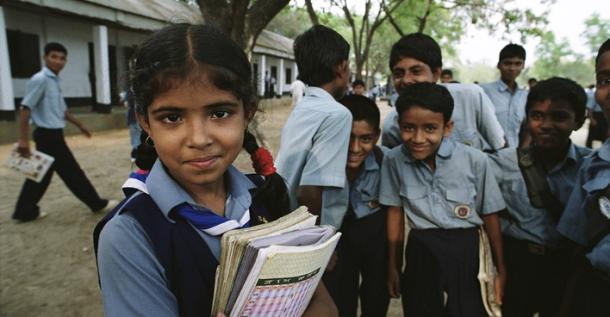Article
What you need to know about UNESCO’s global report on boys’ disengagement from education

Girls have more difficulty accessing education and are more likely than boys to be out of school, particularly at primary level. But as education progresses, it becomes a boys’ problem. On the occasion of its new global report on boys’ disengagement from education, UNESCO is helping you get answers to some important questions on education and gender equality.


How are boys faring in education?
Globally, 132 million boys are out of school. That’s more than half of the global out of school youth population and more than the 127 million girls who are also out of school.
Leave no child behind: Global report on boys’ disengagement from education shows that boys are increasingly left behind in education. They are at greater risk of repeating grades, failing to progress and complete their education, and not learning while in school. While previously boys’ disengagement and dropout were concerns mainly in high-income countries, several low- and middle-income countries have seen a reversal in gender gaps, with boys now lagging behind girls in enrolment, completion and learning outcomes.
Boys are more likely than girls to repeat primary grades in 130 countries, and more likely to not have an upper secondary education in 73 countries. At tertiary level, globally only 88 men are enrolled for every 100 women.
What drives boys’ disengagement from education?
Poverty and the need to work are among the most important drivers of boys’ dropout. For example, in the Philippines, 75 percent of all boys enrolled in lower secondary school complete a full cycle of education, but this falls to 40 percent of boys from the poorest households. Poor boys are worse off than poor girls in some countries. For example, in Bangladesh, 82 of the poorest boys completed primary education for every 100 of the poorest girls.
Gendered norms and expectations impact on boys’ motivation and desire to learn. In many contexts, school activities and certain subjects are considered at odds with expressions of masculinity, making education unpopular with boys.
Practices such as the streaming of classes and gender segregation contribute to boys’ low motivation, underachievement and disengagement from education. Harsh discipline, corporal punishment and other forms of school-related gender-based violence also impact negatively on boys’ academic achievement and attainment. Boys are more likely than girls to experience physical bullying and are often targeted because of their real or perceived sexual orientation and gender identity or expression.
What does this mean for girls?
Improving educational opportunities for girls continues to be of paramount importance if gender equality in and through education is to be achieved. There are still too many girls out of school globally.
Girls in many countries continue to face challenges in accessing quality education, and they also have to contend with inequality, discrimination and exploitation as they transition into the world of work and adult life, even when they perform better than their male peers at school.
Ensuring access to quality education for all is not a zero-sum game. It is important to ensure that a focus on achieving gender parity and equality does not ignore boys. Supporting boys does not mean that girls lose out and vice-versa. On the contrary, equal education opportunities benefit both girls and boys and the broader society.
Why does it matter?
Education is a human right for everyone. Moreover, education has a positive impact on economic growth and salaries. But the cost of boys not completing basic education can be very high – with impacts on future job prospects, salaries and work satisfaction, as well as effects on choices and behaviours, in turn affecting boys’ and men’s health, their role as citizens and family decisions.
Educated men are found to more likely treat women and men equally and support gender equality. Boys who have a secondary education are more likely to condemn gender-based violence. Addressing boys’ disengagement from and disadvantage in education could be transformative in promoting gender equality, reducing violence and protecting the futures of all.
What can we do about it?
Targeted action to improve educational opportunity for boys not only benefits boys’ learning, employment opportunities, income and well-being, but it is also highly beneficial for achieving gender equality and desirable economic, social and health outcomes.
To leave no child behind, stakeholders – governments, development partners (bilateral and multilateral organizations, civil society, the private sector and academia), communities, schools, families and caregivers, and students – must work together, with actions tailored to countries’ specific contexts.
The report provides a set of concrete recommendations including flexible learning programmes and inclusive teaching and learning materials, strengthening labour laws and employment regulations, enforcing codes of conduct for teachers and learners, abolishing repetition policies, addressing harmful gender norms and masculinities, investing in sex-disaggregated data and much more.
- Download the global report: Leave no child behind: Global report on boys’ disengagement from education
- Read the country case studies: Fiji, Kuwait, Lesotho, Peru, United Arab Emirates developed by UNESCO and various partners to understand the economic, social and cultural factors that impact boys’ disengagement in particular contexts
- Learn more about UNESCO’s work on education and gender equality









